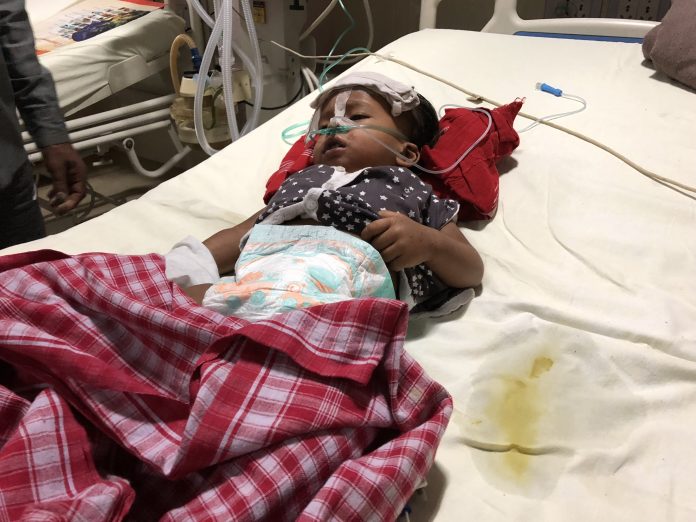By Siddhant Mohan, TwoCircles.net
Last year, BRD College in Gorakhpur shot to worldwide notoriety after dozens of children died due to a critical failure of oxygen. What followed was one of the most intense media investigations into the hospital, its staff and its officials. No wonder then, that one of the first things that the administration did was to shut its doors to the media and hide behind press releases, counter-narratives and the usual bureaucratic procedures. A year on, however, it has emerged that factors which caused the deaths are far from solved and even now, the hospital is indulging in hiding its gaps instead of addressing them. Siddhant Mohan spent many days in and around BRD Medical college, speaking with patients, families, doctors and other staff to find out what is going on in the hospital a year after the deaths. In a two-part investigation, he exposes the good, the bad and the unchanged aspects of the hospital. Here is part two of the investigation.
In the previous part of this story, we looked at the practices and services at BRD Medical College. The college and the associated hospital—being a tertiary treatment centre—supports a large number of patients from the adjoining districts. Most of them cannot afford to visit health centres and hospitals in Lucknow and Varanasi as the management and residence in these two cities is much higher when compared to Gorakhpur.
In this part, we will look into the treatment as well as preventive measures being taken by the authorities to stop the spread of encephalitis in the region, one of the major causes of deaths in Tarai region of the state.
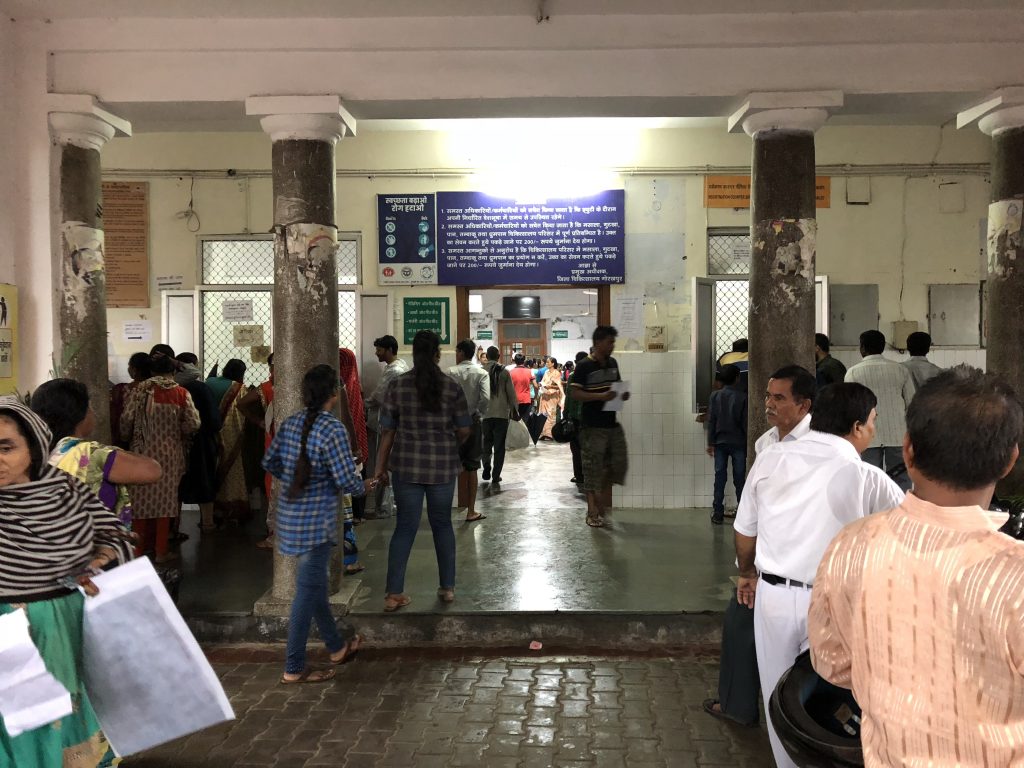
At BRD Medical College, most of the patients come with the suspicion of having AES, an umbrella disease caused by viruses and the patient ends up developing neurological disorders which follow high fever.
According to the National Centre for Biotechnology Information (NCBI) in the US, eastern UP and adjoining areas of Bihar and Indo-Nepal border come under the high-risk zones of diseases which comes under AES. So, when the patients having AES symptoms reach BRD Medical College for treatment, most of them are already on the verge of collapsing. This explains the high load of patients in medical college, which is also a tertiary centre, especially in the regard of paediatric patients.
But with AES being the cause of most of the deaths of children in Gorakhpur, it is becoming evident that the disease is not treatable: however, it is curable to a large extent.
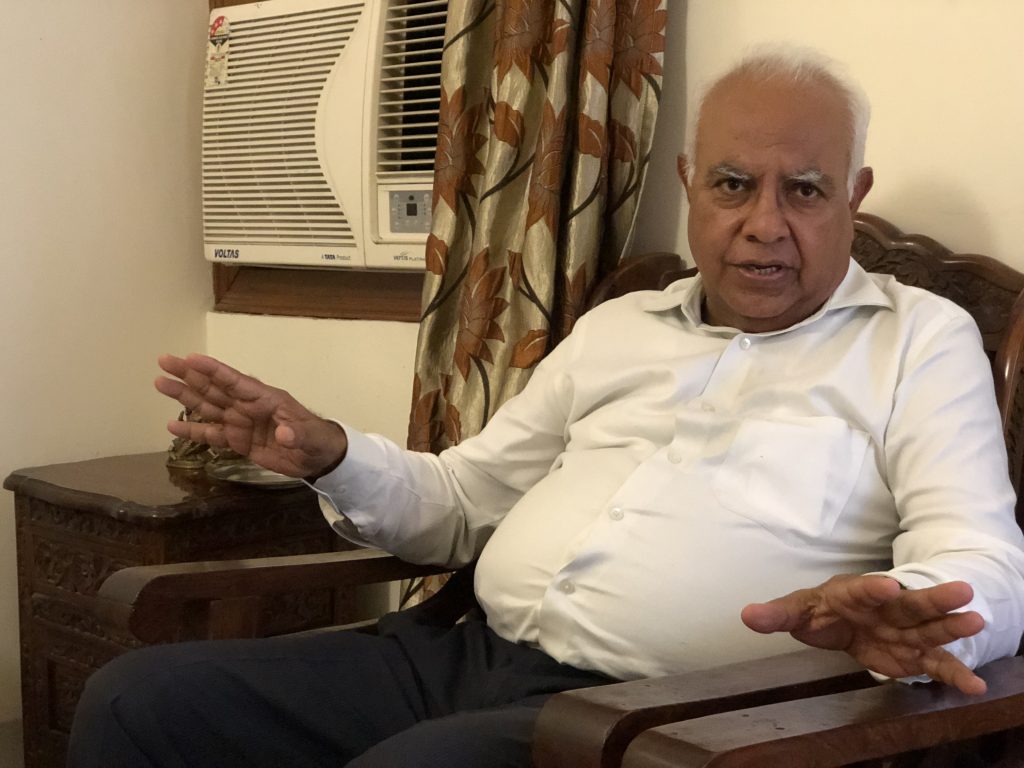
Dr Ramnandan Singh is a 70-year-old paediatrician and also one of the most reputed in Gorakhpur. He was at the same medical college between 1974-1978. He quit the medical college in 1978 and has been in private practice ever since. Most importantly, since 2005, he has been working as the chief campaigner at the Encephalitis Eradication Movement in Gorakhpur region to eliminate the same.
Residing at just one and a half kilometres from the famous Gorakhnath temple, Singh’s home can be located by word of mouth. I reached his residence early evening and was sitting in the drawing room when Dr Singh came in a white shirt and black trousers and greeted me. The first question he asked me was, “Whether I went to medical college to see things by myself,” I replied affirmatively. And then second thing he said was, “I am a fan of Yogi Adityanath, and I have no shame in accepting that. However, I will tell you everything with honesty.”
At one point in the conversation, Singh said, “With 13 years of experience of working on encephalitis, I can firmly say that this disease is one hundred per cent preventable while zero per cent treatable.” At medical college or government hospitals, he said, doctors can only manage symptoms through common routine drugs. “No medicine can fully cure encephalitis,” he says confidently.
Several other paediatricians, including Dr Kafeel Ahmed Khan, confirmed this fact that there is no particular medicine available for encephalitis.
For longer duration, under the recommendation of Indian Medical Association (IMA), which followed the research of Indian Council for Medical Research (ICMR) and National Institute of Virology (NIV) and several other organizations, medical practitioners started giving Azithromycin and Doxycycline to the patients suffering from Encephalitis, but the toll did not decrease at all. Dr Singh said, “Because that is not the medicine to fight AES or Japanese Encephalitis (JE). The research to identify the virus, as well as a vector, is still needed, so it is solely up to medical colleges and hospitals to fight and manage the symptoms only.”
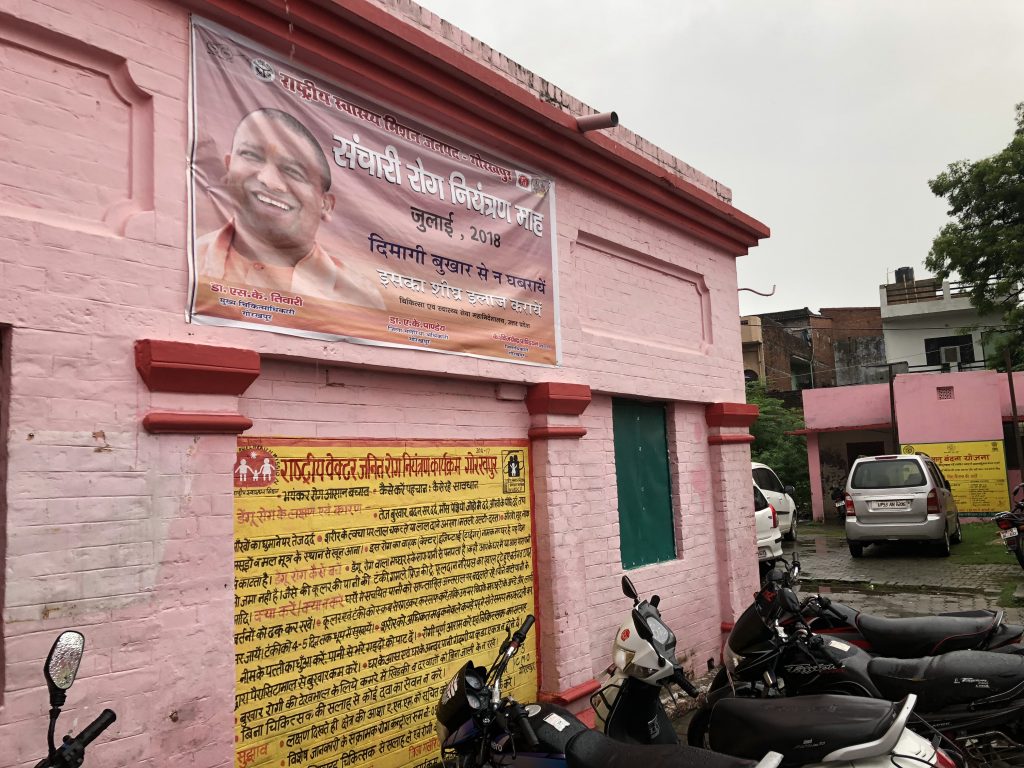
Coming on to the prevention and awareness drives, to be conducted by the state government, Uttar Pradesh government has launched “Dastak” programme earlier this year in order to aware the urban as well as the rural population of the state to prevent AES as well JE. “Dastak”—which literally translates to door knocking—is launched with the help of UNICEF in which 38 districts of Tarai region—mostly affected with encephalitis—have been included. With the two phases of Dastak already completed, the workers go to door to door with the slogan of Darwaja khatkhatao, AES aur JE ko Bhagao (Knock the door and wash away AES and JE), giving ten points preventive measures at every house regarding sanitation, defecation, using clean drinking water, and early treatment of the disease.
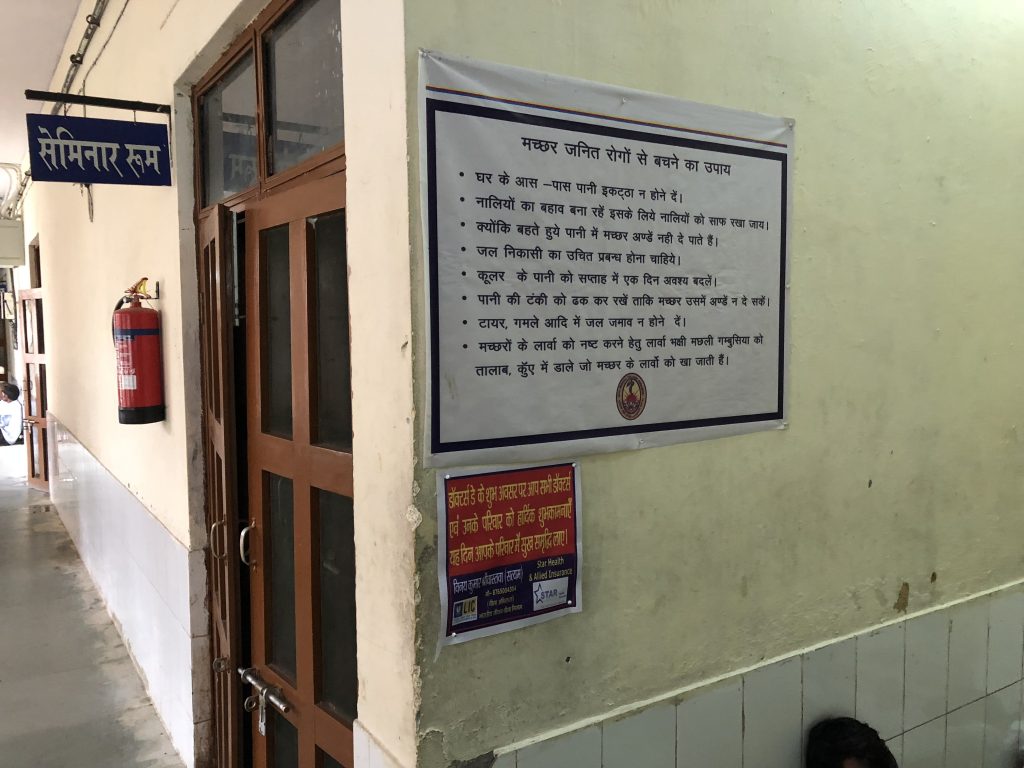
But preventions and treatment practices have done very little to prevent deaths of children in Gorakhpur. The death numbers, of course, have reduced since the past few years, but at BRD Medical College alone, an increase of 18 per cent has been recorded in deaths. Not surprising, that Uttar Pradesh has the highest rate of the infant as well as neonatal deaths in the whole of the country. According to the data available on data.gov.in, the neonatal mortality rate was 64 per thousand deaths in the year 2015-16. Experts believe that Gorakhpur contributes most to this horrific figure.
I met Dr Srikant Tiwari, the chief medical officer at Gorakhpur district at his office based in Gorakhpur district hospital. In a big office, he was sitting behind the desk in a blue shirt and was constantly watching the news over the television. The wall behind him had the list of CMOs Gorakhpur had until now—and by that Dr Tiwari took charge on April 23 this year—and a map of Gorakhpur. Another map of encephalitis affected Gorakhpur was also there, but it was put behind a big printer-copier machine in the corner. I asked about the map, he said, “It is a great tool. I have installed this into the officer District Magistrate as well. Soon, we will hang it here on the wall.”
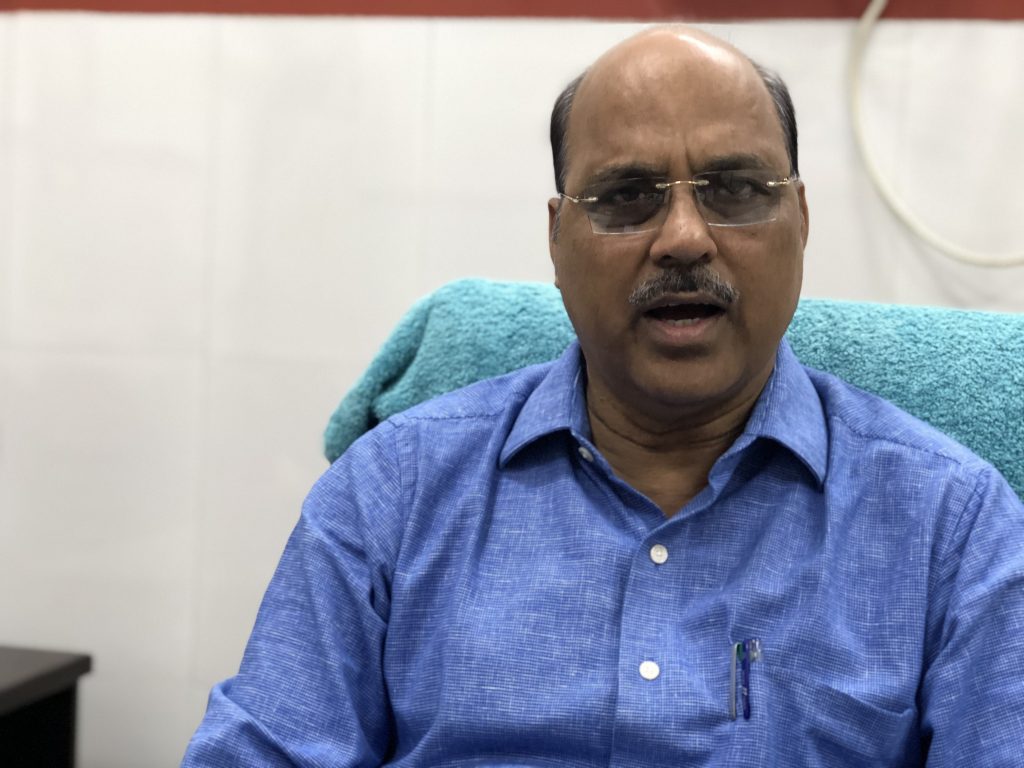
Soon after knowing the purpose of my visit, Dr Tiwari starts talking like a mouthpiece counting all the measures taken by the government in the past few months. He said, “If talking about preventive measures, the most important thing is sanitation. And this is not just a job of the health department, many government departments including municipal corporations are responsible for bringing out cleanliness and sanitation.”
While talking about Dastak campaign, and various included practices in it, Tiwari came to Primary Health Centres (PHCs) and Community Health Centres (CHCs), where reportedly at least 19 Encephalitis Treatment Centres (ETCs) have been created to lower the load on BRD Medical College. He said, “If a patient does not get better at these centres, we have also created three mini PICUs at Gagaha, Piprauli, and Chaurichaura to provide better treatment. So that patient does not has to rush to Medical College for everything.”
Chaurichaura is situated at least 24 kilometres from Gorakhpur city. The mini PICU was locked from outside when I reached there around night. Locals informed that there is only one doctor available to run the same PICU, and he closes it during the evening.
When raised it with Dr Tiwari, he said, “Indeed we have increased facilities, but we are still into appointing skilled staff at these PHCs and CHCs. Soon we will have them equipped,” thereby agreeing that even after the disastrous episode in Gorakhpur last year, administrative practices are yet to witness the light of the day. Tiwari also claimed to have vaccinated every child below 15 years of age to prevent more AES cases in Gorakhpur region.
Dr RN Singh comments, “See, setting up PICU and ETCs at the block level, sounds good, and it should be done very aggressively. But right now, these are just measures to dilute the media attention from Medical College. PHCs and CHCs do not even entertain the encephalitis patients, they simply refer children, even on slightest symptoms, to the BRD Medical College, because they are not equipped with skilled doctors yet.”
Dr Tiwari told me further, “If they are referring patients directly to the medical college, they are wrong in doing so. They will have to first send them to mini-PICUs. But the public also has a perception that if they go to BRD Medical College, they will get good treatment there. However, I agree that a lot of changes are needed to change that perception.”
On July 6, Gorakhpur authorities launched an app named “Stop JE/AES” on Android platforms, but apparently, they have failed to publicise it. In a month since its launch, there have been only 100 downloads of the app which is supposed to “focuses on providing health department staff that are the end user of the app to call and understand the patient conditions and symptoms.”
It was also meant to direct staff to reach identified patient for targeted intervention so that the patient is treated in time as in JE/AES the first 48 hours are extremely critical for ensuring effective patient treatment.
As the few who have downloaded, it responded, the app crashed even after receiving the last update on July 16.
The BRD Medical College is turned into a fortress in past 11 months. There are guards everywhere, and staffs get transferred to other departments if they are seen talking to any journalist or activist. College does not provide death numbers officially, and if sources to be believed, only two people receive daily birth and death data in sealed envelopes. CMO Dr Tiwari is one of them. When I asked about this, Dr Tiwari said, “Maybe according to guidelines, we are not providing numbers to media. But let me assure you that I am getting numbers every day, if you ask me, I will tell you.” But when I asked for seven months the death numbers of children at BRD Medical College, CMO refused and said, “I cannot provide you in writing.” However, he confirmed the numbers I got from my sources.
At many points, staff nurses, ward boys as well as doctors become aggressive if journalists inquire about things inside the medical college. At one point, one attendant was scolded by the doctor, out of the blue, while she was talking to me about her daughter.
Authorities at the medical college are in the question yet again for buying liquid oxygen at a price higher than earlier. Before the oxygen shortage at BRD medical college in August 2017, it was Pushpa Sales—the owner of which, Manish Bhandari was put in jail even when there was “no shortage of oxygen” for investigating committees—which used to sell the oxygen at the rate of 16 Rs/ litre. Pushpa Sales used to buy the oxygen from INOX and then sell it to the medical college. But now, the medical college is buying oxygen directly from INOX, but at the rate of 19 Rs/ litre. Why the college is buying oxygen at increased prices, authorities have no reply.
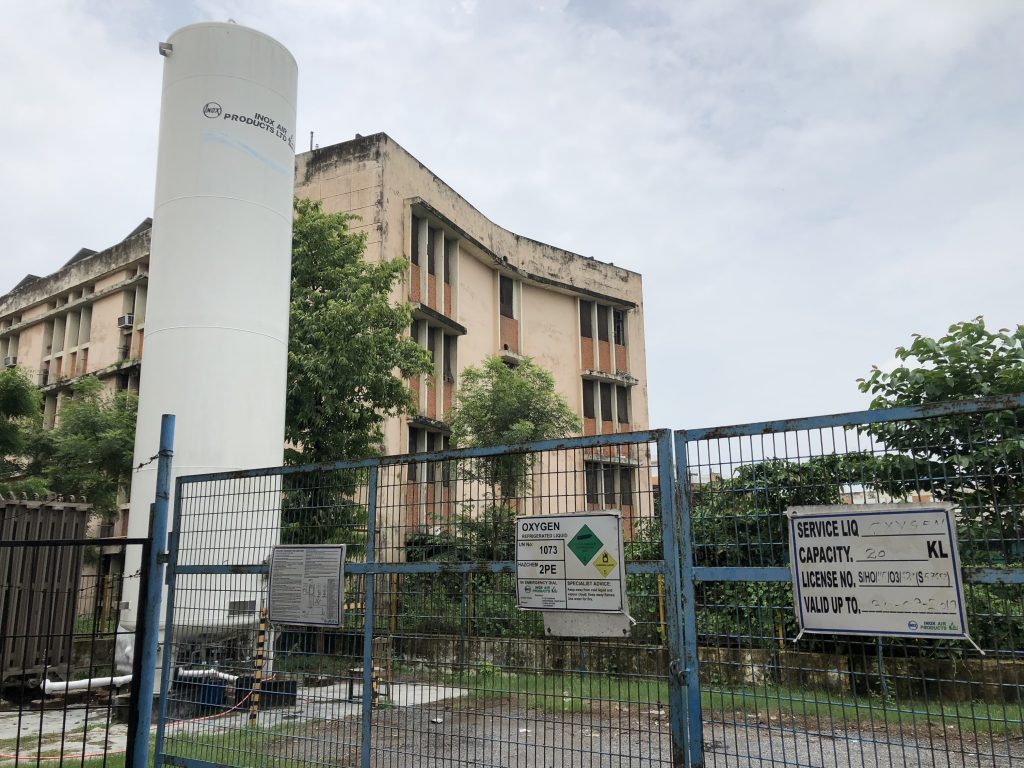
When I met Dr Ganesh Kumar, principal and dean the at the medical college, I got the idea why the whole medical college is anti-media. After a couple of hours of waiting, I entered the office of Dr Kumar who was busy because of the ongoing admission process. He was wearing a blue-violet shirt and a gold black wristwatch. With few papers on the table, photos of Gandhi, BR Ambedkar and Yogi Adityanath were hanging on the wall behind him.
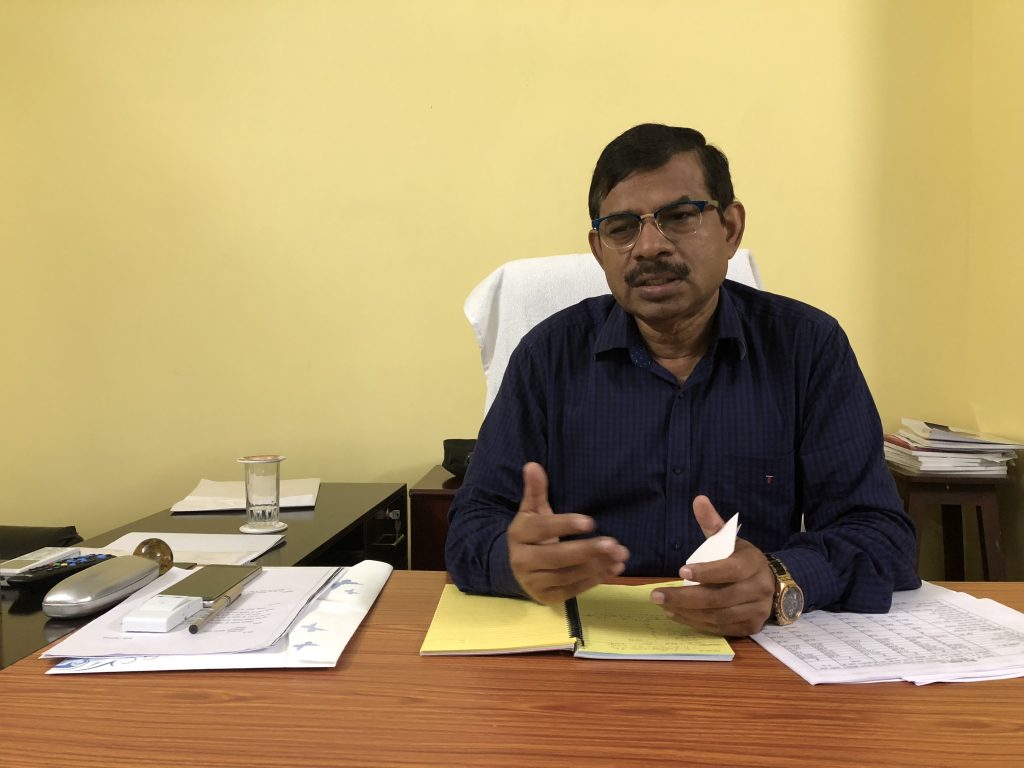
Dr Kumar was frustrated with the media and told me that I was putting unnecessary focus on BRD Medical college, instead, I should be taking a look outside the premises. He said, “So what if there were deaths in August? Deaths happen in this hospital every month. Can’t you see that we have made changes ever since?” This remark gave birth to an obvious question, “Since when? August 2017?” He said, “Yes.”
So I asked him, “So you think that things were not good until August last year and hence you had to bring some changes? Things were not “improved”, as they are now. Is that so?” Dr Kumar started fumbling, so he said, “I was not in-charge when oxygen controversy happened last year. I cannot comment on that.”
He further said, “I am frustrated with the media pressure. I should not be giving you this much of unnecessary time.” Upon asking the reason for frustration, Dr Kumar said, “Media takes death numbers of all the departments and combine them. I have even seen several of your reports where you have also done the same.” I told him to go through my reports several times before saying any such thing, he replied, “I may be wrong about you, but several other journalists have demonised BRD Medical College. And worse, the doctors provided them with every kind of help in doing so.”
When I asked, “Which doctors? The jailed ones?” Dr Kumar did not say anything.
He said, “To prevent such demonising practices, we have stopped giving numbers. We were not doing it even earlier. You should be happy to know that we have increased the paediatric ward to 343 beds from earlier 138 beds. Free medicines from inside the hospital are being provided to the patients. Even we have so much of staff right now, that most of them sitting free.” When I told him what irregularities I found in the paediatric wards as well as in ICUs, he said, “See, this is the thing. Media cannot applaud the positive practices.”

Coming back again to deaths, Dr Kumar too did not deny the death numbers, but said something which stands close to the remark made by Siddharth Nath Singh last year. Dr Kumar said, “Whatever deaths you are showing, those are not big numbers considering the high area which BRD serves. It is just usual.”
The paediatrician Dr RN Singh too said, “There are lesser numbers of deaths due to encephalitis, but principal Kumar is saying that his staff is sitting free, I cannot believe that. I have seen that medical college closely, they are still short on staff and patients are still suffering, but things have been improving slowly, and one has to be patient enough to witness the change.”
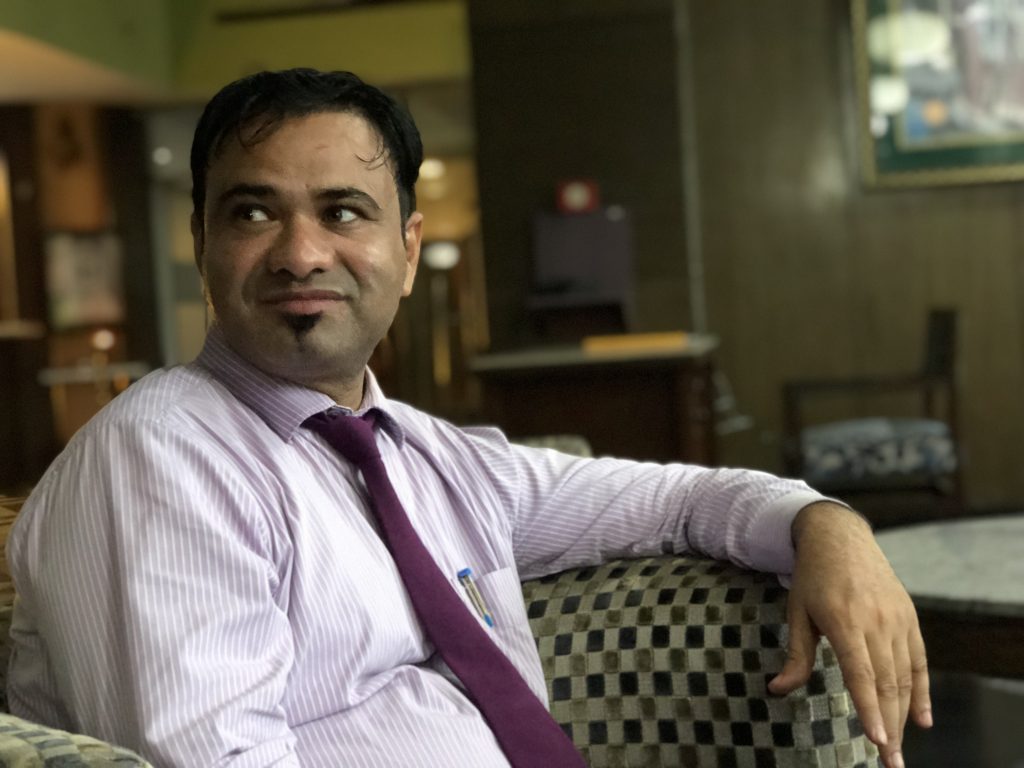
Dr Kafeel Ahmad Khan, the suspended assistant professor at the medical college who is out on bail, commented, “You are right that only prevention can stop deaths, and treatment can only provide stability to the patients.” The day I met Dr Khan, he came after a free encephalitis camp conducted outside of Gorakhpur city. Dr Khan said, “If the authorities are saying that they have vaccinated every kid, how I could find only 30 children vaccinated out of 170 I examined at the camp today? If I could rely on my study, only five per cent of the kids have been vaccinated, otherwise, cases would not be coming up constantly.”
Dr Khan further said, “So, I could say that either government is lying about the numbers or the ground workers are not doing their jobs properly,” adding that deaths in BRD Medical College are happening only because government health system is failing. “What could be the other reason?”
In the aftermath of the deaths in August last year, the UP government had formed a special task force (STF) which led to the arrests of Dr Kafeel Ahmed Khan, medical college principal Dr Rajiv Mishra, Dr Purnima Shukla, former Anaesthesia Department Head Dr Satish Kumar, ex-Chief Pharmacist Gajanan Jaiswal, Accounts departments clerks, Sudhir Pandey, Udai Sharma, Sanjay Tripathi and owner of Pushpa Sales Manish Bhandari in September last year.
The accused were charged under various sections of Indian Penal Code pertaining to corruption, embezzlement of funds, private practice and criminal conspiracy.
The arrest of Kafeel Ahmed Khan was much debated as he was the first one who reached the hospital on the night of August 10 and tried to save lives by managing oxygen cylinders from various sources.
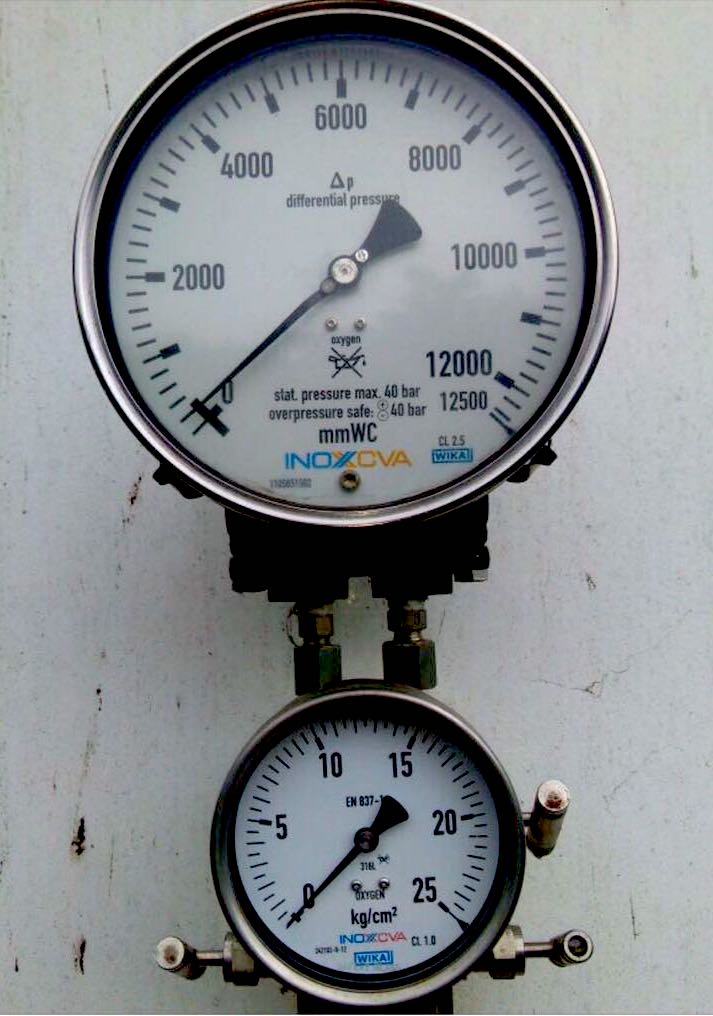
Due to a lack of substantial pieces of evidence, STF dropped private practice and corruption charges from Dr Khan in November. In April, Dr Kafeel got bail from Supreme Court.
The Supreme Court had already granted bail to Manish Bhandari, whose firm Pushpa Sales was responsible for supplying oxygen to BRD Medical College on Monday.
In the following months, Dr Satish Kumar, Dr Purnima Shukla, and Dr Rajiv Mishra also got bail from the Indian Supreme Court. The bail applications of Gajanan Jaiswal, Sudhir Pandey, Udai Sharma, and Sanjay Tripathi are still pending with Allahabad High Court.
What also could reflect the bail acceptance or rejection of the accused is that one applicant usually have to pay a big amount of money to the Supreme Court lawyers for consultation and hearing, and those who are still in jail, as sources tell, could not manage the money to hire lawyers. When families contacted for clarification, no response was given.
Events at the Medical College took a strange turn this year in January, when a mysterious fire broke out in the Principal’s office and records room of the college, and engulfed various important document records including several files related with the Oxygen shortage case. The cause of the fire is still unclear.
Manoj Singh, a local veteran journalist who has been keeping eye on the Gorakhpur affairs very closely, told me, “Whatever happened in August last year should have made things more transparent and improved. But the case is just reverse. Things have become more opaque than previous times. One cannot actually know what is happening inside the medical college, one cannot know if less or more children are dying, one cannot know if doctors are doing their jobs or not. There must be some accountability in such a government set up.”

